
Ever since I joined Digital Trends nearly two years ago, I’ve been tremendously jealous listening to my colleague, Andy Boxall, rave and rave about how much he loves the Oura Ring. Somehow or another, conversations in our Microsoft Teams meetings often turn into Andy telling me — once again — just how good the Oura Ring is. That feeling was compounded when Christine Romero-Chan joined our crew and did the same thing. And there I was, Oura Ring-less, having to take their word for how amazing the smart ring was.
So, I decided to do something about it. I got an Oura Ring for myself and have been wearing it (almost) daily since September — hoping to fall in love with it the same way Andy and Christine have.
Unfortunately, that’s not what happened.
What I love about the Oura Ring
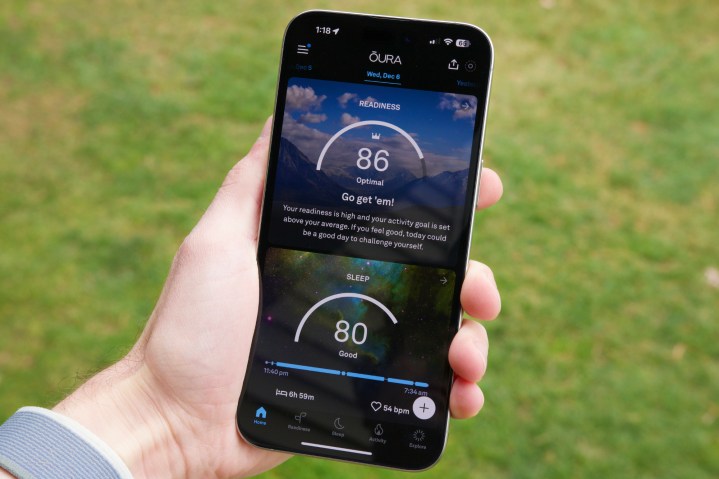
Before we go any further, I want to make one thing very clear: There’s a lot I really like about the Oura Ring — love, even.
I’ve worn a lot of fitness trackers over the years, and because of that, I’ve also used a lot of fitness-tracking apps. Some of them are good, some are bad, and others are downright terrible. The Oura app is one of the best I’ve ever tested.
The Oura app strikes a wonderful balance of offering you a lot of health data while explaining what it all means in simple terms. When I wake up each day after tracking my sleep with the Oura Ring, I open the app to see my sleep score and a well-explained summary of what it means. The other day, for example, the Oura app told me I “got enough restorative deep sleep,” with a reminder that “deep sleep helps your body and mind recover and reenergize.” Below that was a preview of my sleep stages, and with just one tap, I could see full breakdowns for my sleep efficiency, restfulness, timing, and other stats.
Oura does a similarly good job with the “readiness” score it gives you each day. Based on your sleep from the night before night and your activity the previous day, you get a 0 to 100 score estimating how ready your body is for the day ahead. After that night of sleep I just mentioned, Oura told me I had an 86 readiness score and that — if I felt good — this would be a good day to try and challenge myself.
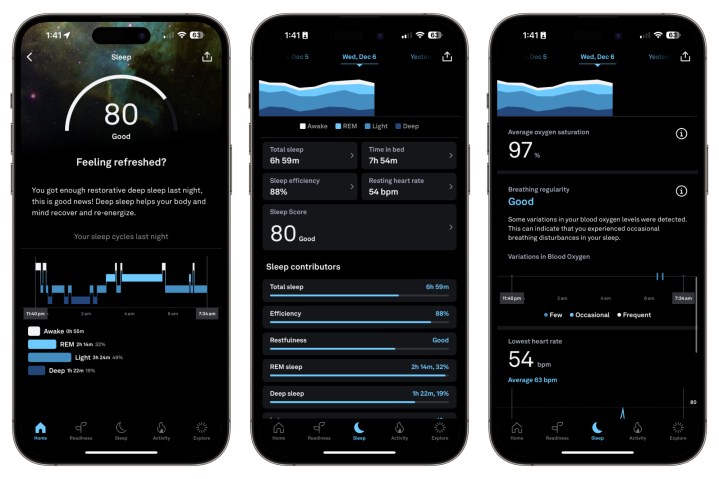
If you go digging through the Oura app, you can find statistics like your calories burned, steps, walking distance, etc. But I’ve found the app’s focus on sleep quality and readiness to be far more effective than trying to hit an arbitrary step count each day.
Oura’s not the only company to try an approach like this, but it’s the quality of the Oura Ring’s tracking that’s kept it on my finger for so long. The sleep data it collects is often much harder on me than that of the Fitbit Charge 6 or Apple Watch Ultra 2, and it also lines up much more accurately with how I actually feel. And the written summaries for each score, which could easily come off as generic and not helpful, often feel like they were written just for me — and, as such, are something I look forward to reading each day.
And, of course, there’s the ring itself. I have the Horizon style of the Oura Ring in the rose gold color, and I think it looks excellent. It is a bit thicker than my normal wedding band, but beyond that, it looks more like a piece of jewelry rather than another gadget strapped to my body.
A very unique (but critical) problem
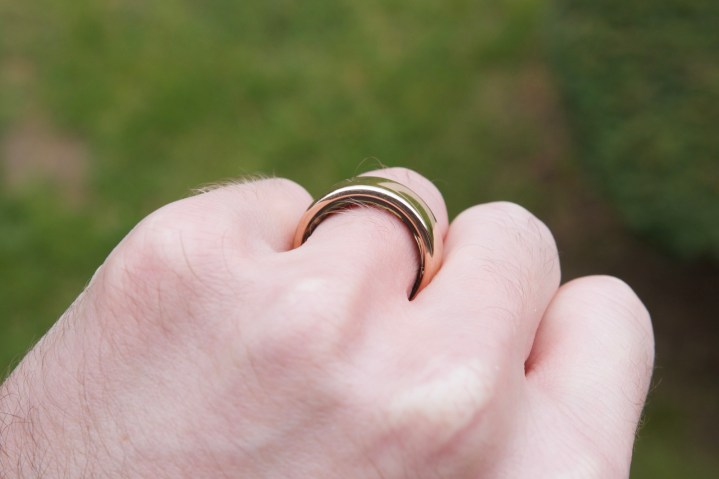
If I like the Oura Ring so much, what gives with the headline of this article and the way I opened it? For a lack of better words, it’s not you, Oura Ring — it’s me. More specifically, it’s my fingers.
I wear the Oura Ring on my ring finger on my nondominant hand. I wanted it to double as my wedding band when wearing it, mainly because I didn’t want two rings on a single hand or to wear a ring on my dominant hand. I tried both approaches when I received my Oura Ring sizing kit, and I just couldn’t get behind either one. So, I went for a size that fits my nondominant ring finger.
The Oura Ring fits snugly on that finger, which is important if you want accurate sleep and activity readings. The problem, however, is my bony knuckles. To get the Oura Ring on and off that finger, I have to run it under the sink to get it wet. This takes just a couple of seconds, and initially, I didn’t think it’d be a problem.
Reader, I was wrong.

I severely underestimated just how often I take the Oura Ring off throughout the day. It’s very cold right now in Michigan, which means my hands are dry all the time. I like putting lotion on a few times throughout the day, and each time, I have to take the ring off. The same goes for when I’m using dumbbells at the gym — unless I want to scratch the hell out of the Oura Ring. I also take it off when I shower, when I’m cooking, and when I need to charge it every few days. Those are a lot of instances where I have to go through my sink ritual to take the ring on and off, and my knuckle isn’t fond of it.
I get that this is an extremely personal issue that only applies to myself, but it’s also one that I can’t overlook. I want my fitness tracker to be something I don’t have to think too much about. Thanks to my weird finger preference for rings and my oddly sized knuckles, this has been a constant point of friction.
Great for some health data, but not all
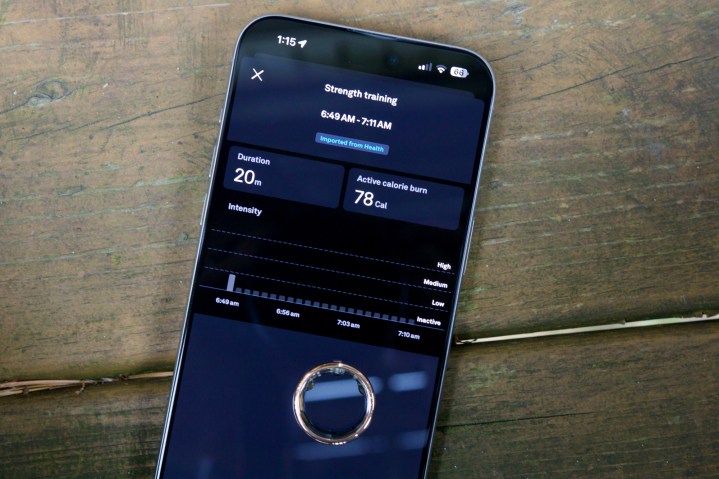
But it’s not just my fingers that have made the Oura Ring an awkward fitness tracker. As fantastic as it is for sleep tracking and telling me my body’s readiness, it leaves a lot to be desired when it comes to workout tracking.
The Oura Ring can track my runs, but it doesn’t offer any information in the app about my running pace, heart rate zones, or other more detailed stats. It’s also not a good choice for weightlifting, which I’ve been doing a lot more of this year. You can technically wear the Oura Ring while weightlifting, but it doesn’t feel comfortable at all having the right pushing against a dumbbell or squat bar. That means I have to take the Oura Ring off anytime I lift weights — triggering my complicated process to remove it.
Not only that, but it means I miss out on data I care about. I can wear my Apple Watch to track my weightlifting and have the data from Apple Health imported to the Oura app, but the stats it offers are bare-bones at best. I can see the duration of the workout and my active calories burned … and that’s it. I want the Oura app to be my one-stop destination for all of my health data, but because of the way I like to exercise, I can’t.
The Oura Ring just isn’t for me
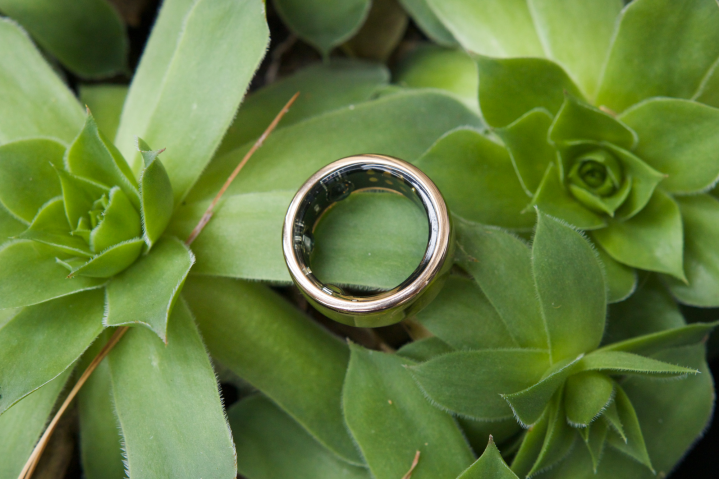
This is not how I thought this article would go. When I received my Oura Ring, I fully expected to write something about how it had become my new favorite health wearable and how I couldn’t wait to keep wearing it for the foreseeable future. As things stand right now, I think I’m going to put my normal wedding band back on my finger and end my time with the Oura Ring.
But that’s just me. Overall, I think the Oura Ring is a brilliant piece of tech. If you have better-shaped fingers and exercise differently than I do, I think it’s one of the best fitness trackers you can buy today. It’s frustrating that it doesn’t fit into my life the way I wanted it to, but that’s also the beauty of wearable tech in late 2023 — the options are virtually endless. I’m better suited by something like the Garmin Forerunner 265. The Oura Ring may be the perfect choice for you. Your friend may think the Google Pixel Watch 2 is the perfect fitness tracker.
I’m glad I finally got to use the Oura Ring, and I hope Andy and Christine keep having a great time with theirs. I’m also eager to see what Oura does in the future, but — at least for now — I’m putting the Oura Ring back on my nightstand and calling it a day.



